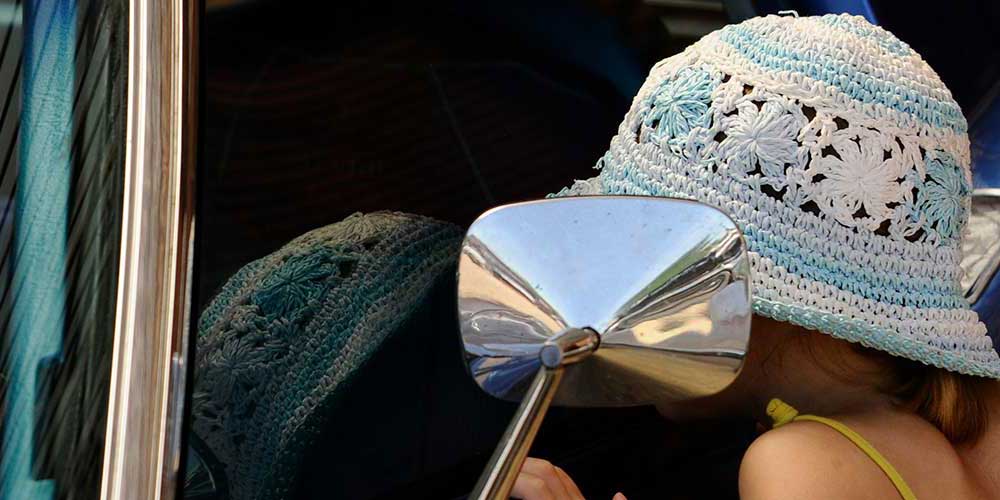By Robert Tate, Automotive Historian and Researcher
Images Courtesy of GM Media Archives, Ford Motor Company Archives, Chrysler Media Archives, Shorpy Historic Archives
Published 7.12.2023
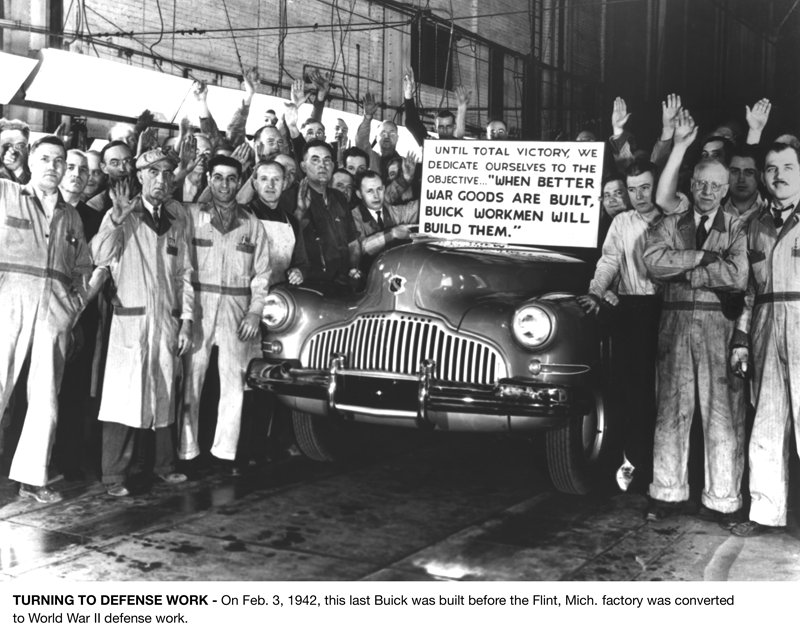 The last 1942 Buick celebration with factory workers (GM Media Archives)
The last 1942 Buick celebration with factory workers (GM Media Archives)
After the attack on its naval base at Pearl Harbor on December 7, 1941, the United States entered World War II. American automotive manufacturers virtually overnight transitioned from making their 1942 models to make vehicles, planes, engines and many other important components to help the Allies win the war. As the Great Depression began to subside, Americans worked to regain a normal lifestyle as Germany invaded Poland in 1939, and Japan began to assert control in many parts of Asia in the early 1940s.
The transition to a wartime economy brought many material substitutes in the manufacturing of the 1942 models. More plastics were used for interior components, and molybdenum replaced nickel in valves, gears and shafts for automobiles at the time.
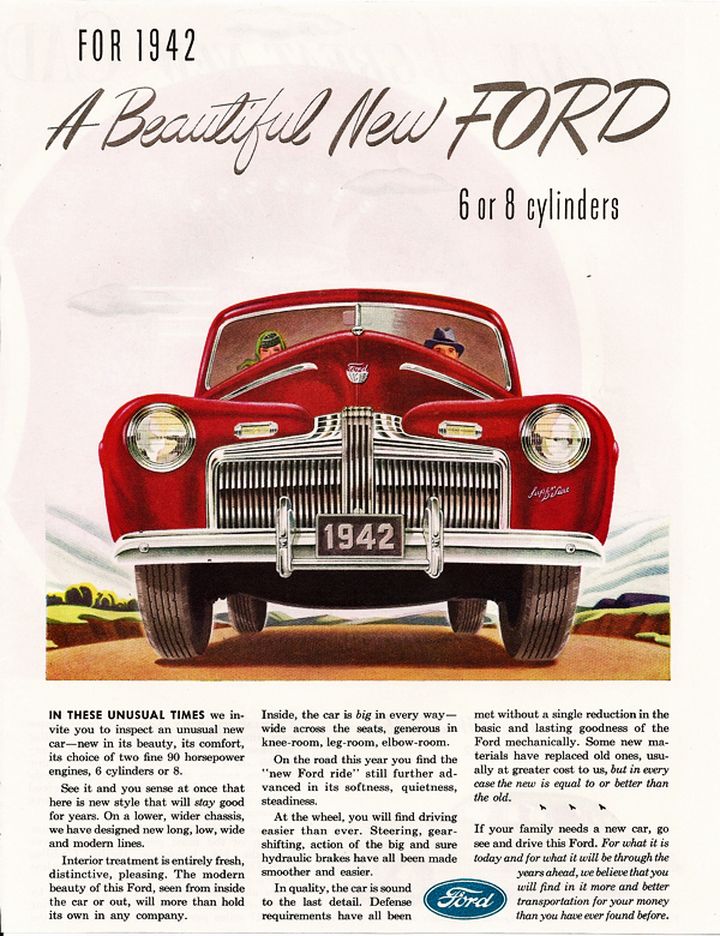 1942 Ford sales material (Robert Tate Collection)
1942 Ford sales material (Robert Tate Collection)
The final 1942 Ford models were manufactured on February 10, 1942. The 1942 Fords were not that much different than the 1941 model designs. Some automotive historians have said that a limited quantity of 1942 vehicles, mostly trucks, were made under government authorization for essential civilian needs. During the war, Ford Motor Company manufactured the world-famous Jeep and B-24 bombers, which were built at their Willow Run plant.
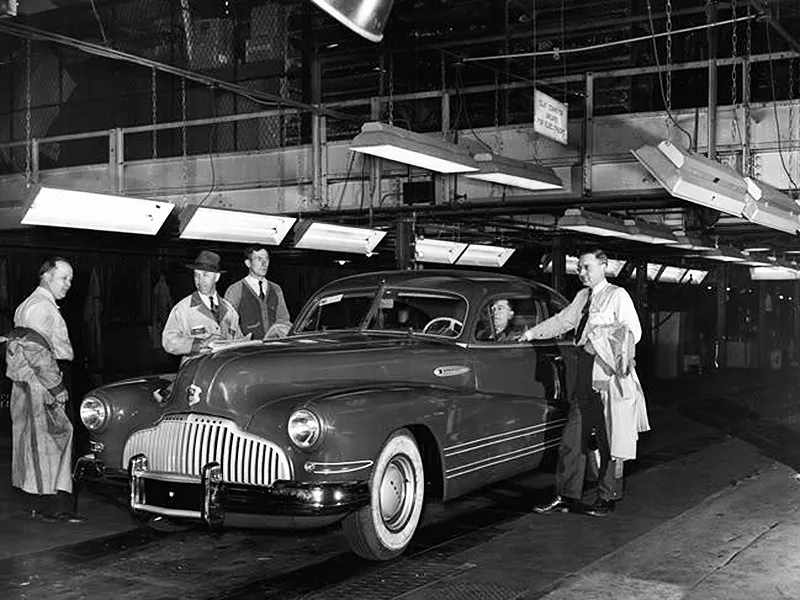 The last 1942 Buick (GM Media Archives)
The last 1942 Buick (GM Media Archives)
The last Buick model was assembled in Flint Michigan on February 3,1942, by which time most all manufacturing plants in the United States had switched to wartime production. Buick’s last pre-war vehicle was a wartime “blackout” special model. The term “blackout” was used on production models as the wartime transition was underway, according to Jim Donnelly, automotive writer for Hemmings/Classics.
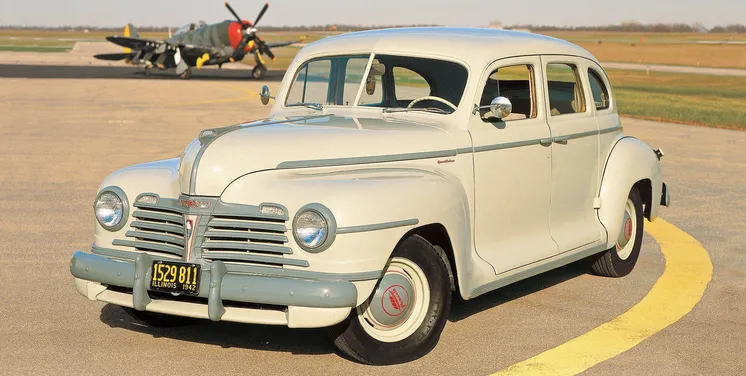 The 1942 Plymouth Blackout model (HemmingsClassics)
The 1942 Plymouth Blackout model (HemmingsClassics)
The 1942 Plymouth model P14 brightwork was painted and not chromed, with a limited number of body styles offered. Running boards were concealed. Production of these models started in July 1941, and these cars became known as “blackout models” as well. After Pearl Harbor, Chrysler Corporation was among the first to receive government contracts. The first they were awarded was for tanks. By January 1943, Chrysler employed 145,000 workers on 30 major contracts in 24 plants. As more production was needed, new plants were constructed and other facilities were used, including the old Graham-Paige building in Detroit. Before the war, the body drop was always a key moment in the automotive assembly process, when the auto body was lowered onto the chassis. DeSoto modified the operation for production of Helldiver wing section aircraft parts.
 1942 DeSoto ad (Chrysler Archives)
1942 DeSoto ad (Chrysler Archives)
On January 28, 1942, engine production at Lincoln and Mercury plants ceased. On February 10, all of their automotive manufacturing plants shifted to war production. The last Lincoln to come off the line was a 1942 Lincoln Zephyr.
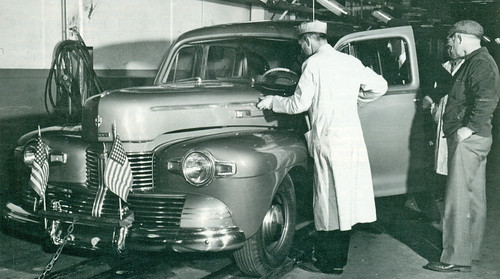 The last 1942 Lincoln Zephyr (Ford Motor Company Archives)
The last 1942 Lincoln Zephyr (Ford Motor Company Archives)
Packard also started manufacturing engines and boats to support the war effort. For example, the last 1942 Packard automobile was produced at the Detroit East Grand Boulevard plant on February 9, 1942. Packard re-tooled their facility to manufacture marine V-12 engines destined for PT boats, as well as Rolls Royce Merlin aircraft engines for P-400s and P-51s.
 The last 1942 Packard assembly (Packard Archives)
The last 1942 Packard assembly (Packard Archives)
In early 1942, the last Nash automobile was assembled at the Kenosha, Wisconsin plant, and the company transitioned into making aircraft engines and helicopters. This was part of the Nash-Kelvinator Corporation.
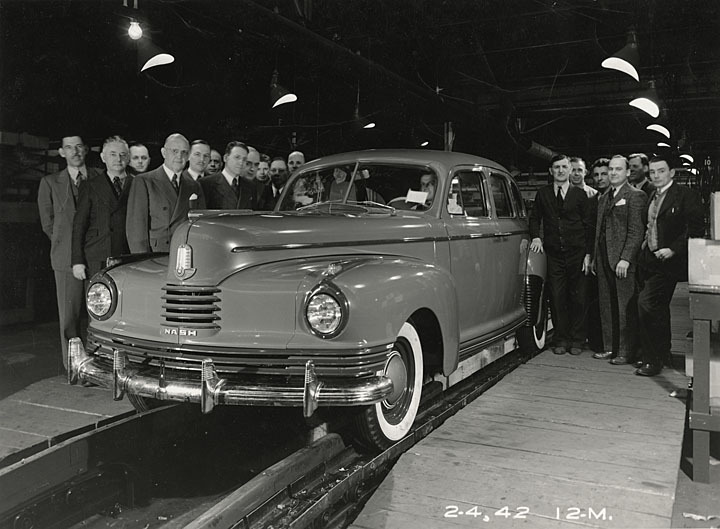 The last 1942 Nash assembly (Chrysler Archives)
The last 1942 Nash assembly (Chrysler Archives)
Hudson also contributed to the war effort. The last Hudson model victory sign said (not pictured) “Last 1942 Hudson and built to last” and is now a part of our history books.
In conclusion, the 1942 model year was a turning point in the American automotive industry when car production ended and every automaker focused on the production of materials dedicated to winning World War II.
Bibliography
Dammann, George H. “Illustrated History of Ford.” Crestline Publishing, 1970.
Kimes, Beverly Rae & Clark Jr., Henry Austin. “Standard Catalog of American Cars 1805-1942.” Krause Publication, 1989.
Donnelly, Jim. “How World War II Transformed the American Auto Industry Class of 42.” Hemmings/Classics, March 3, 2020.
Butler, Don. “The Plymouth and DeSoto Story.” Crestline Publishing, 1978.


